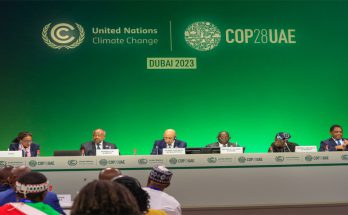 In 2022, President Mnangagwa announced Rwanda had agreed to help Zimbabwe to fund the rural electrification programme to improve the lives of people residing in the countryside.
In 2022, President Mnangagwa announced Rwanda had agreed to help Zimbabwe to fund the rural electrification programme to improve the lives of people residing in the countryside.
This is also in line with the Government’s thrust of leaving “no one and no place behind” and a giant step towards achieving an upper middle-income country by 2030.
The multi-million programme involves 9 different projects from generation, transmission and distribution to customer services, ZESA Holdings executive chairman Dr Sydney Gata said in an interview on 17th February.
“The programme is well on course,” said Dr Gata. “The size of the project is something that ZESA has never done before. We are hoping that by the end of this month, we would have finished the modalities for implementing this massive project.”
Dr Gata would, however, not be drawn to provide the specifics of the programme.
With the majority of Zimbabweans living in rural electricity, with some far from the grid network, the US $800 million programme would help the country close its energy access gap, analysts have said.
“Energy access is a precondition for any development you think of and lighting up rural areas will inevitably accelerate development and economic activities in those areas,” Mr Enock Rusere, a lecturer of Development Studies with a local private university said in an interview.
“This intervention will also put Zimbabwe on course to achieve goal number 7 of Sustainable Development Goals.
Goal number 7 of the Sustainable Development Goals seeks to ensure access to affordable, reliable, sustainable and modern energy for all classes of citizens by 2030.
Access to affordable, reliable and sustainable energy is crucial to achieving many of the SDGs – from poverty eradication via advancements in health, education, water supply and industrialization to mitigating climate change.
Currently, Africa is the world’s least electrified continent with nearly 600 million people remaining without access to electricity, according to the Energy Progress Report 2022 published by the United Nations. To achieve electrification for all in sub-Saharan Africa, investments of at least US$31 billion per year will be needed by 2030.
Harare-based analyst Mr Carlos Tadya said the rural electrification programme would result in an inclusive economy where people in remote areas will also participate in the economy.
“There are a lot of economic opportunities out there; unrealised economic potential and this can be addressed by electrifying those areas,” said Mr Tadya in an interview.
“If implemented, this will be a game changer for rural people and the entire economy.”
The country has already started investing in off grid power generation to ease pressure on the already overstretched national grid. In light of huge demand, largely driven by rapid urbanization and increased activity in sectors such as mining, off grid solutions would see more citizens having access to power. The off grid solutions will see more people, especially those far from the national grid getting access to power.
Today 10,009 rural institutions have been electrified nationwide using both grid and solar technologies, with a total of 430 solar mini-grid systems having been installed at remote rural schools and clinics countrywide. This year, the Rural Electrification Fund will channel $18,3 billion and an additional $1 billion from the fiscus, to accelerate the electrification and off-grid solutions for rural communities.
This intervention will also support education 5.0 in rural schools, providing opportunities for beneficiaries to innovate and industrialise, as a catalyst for achieving Vision 2030.



